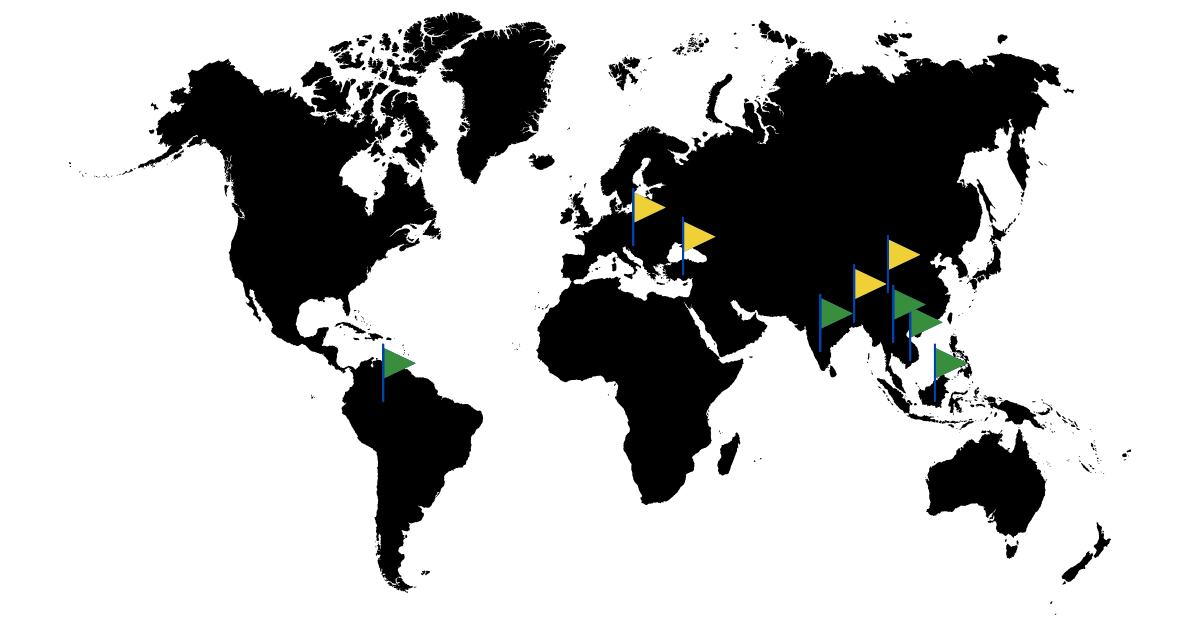International trade hinges upon hundreds of thousands of metal shipping containers humming along from port to port each day. These containers are the primary carriers of everything from food to electronics and account for up to 80 percent of all common good transportation. For the last seventy years, they have become the norm for freight shipping, and in the US alone their trade is annually valued at 14 trillion USD.[Text Wrapping Break][Text Wrapping Break]When they work as intended, these shipping containers offer businesses low costs and flexibility in supply chain strategy. Unfortunately, right now, they are hindering international trade from flowing properly and creating one of the world’s worst-ever supply chain crises. By looking at how these containers became the shipping mainstay, it becomes clear how and why they are now a major sticking point for the global supply chain.
The Story Behind Shipping Containers
The story of the ubiquitous shipping container begins in the 1950s when engineer Keith Tantlinger designed a rectangular box that would forever change the way the world ships goods.
He wasn’t the first to think of using a box for shipping of course, but he did create a standardized format that became what we know and use today. Small details like making each of the eight corners identical and fitted with “twistlocks” made them more easily stackable on trains, truck beds and freight ships alike. These innovations allowed dock and ship cranes to load and unload them with greater speed and accuracy, further increasing the overall efficiency of international trade. [Text Wrapping Break][Text Wrapping Break]For a brief time, Tantlinger’s design was only utilized within the USA, but the international audience adopted its usage in the mid-1960s. By the 1980s the 40-foot version of his original design became the default option for freight shipping.
The uniformity of metal shipping containers gave businesses lower transport costs and ultimately a more flexible supply chain strategy. Good producers could now have one product sourced and assembled in multiple locations, as the containers allowed the various pieces to move cheaply and consistently from one location to the next.
Businesses could buy raw products where they were the least expensive, assemble them where labor was similarly agreeable to their budget, and then distribute them to ports nearest to their main consumers.[Text Wrapping Break][Text Wrapping Break]The result was a lower cost of common products. However, the underlying risk was that if any single stop on the chain became disrupted, then the entire system would stall out, as is the current case for international commerce.
The Present Problem
To put it simply, right now shipping containers are out of their ideal position and normal flow due to the influences and aftershocks of the pandemic. There are too many containers in ports that aren’t typically used for export, and not enough available containers in supplier ports. [Text Wrapping Break]
In the early days of the pandemic, a significant portion of international freight ships ceased functioning as a precautionary manner, which sowed the seeds of the present situation.
While some businesses like restaurants and gyms took a massive hit due to their bottom line, the desire to purchase physical goods increased. The shortage of both goods and shipping capacity along with the increase in demand culminated to drive up the price of consumer products by as much as 10 percent.
Even when freight resumed, restrictions between international shipments due to new COVID protocols increased the transport time of common goods, further compounded by many businesses that utilized the multi-port assembling strategy.
As fewer ships were allowed to drop their goods off, the number of empty containers being sent back to the supplier ports dwindled as well. This shortage of containers and increased demand has led freight shipping costs to skyrocket to eight- to nine-times as much as they were before the pandemic.
As both the cost of the goods themselves and that of the transport itself increased, the end effect has been less available goods for consumers which cost far more than normal. Other significant setbacks like the Suez Canal blockage and the Yantian port bottleneck continued to exacerbate the already struggling international supply chain.[Text Wrapping Break][Text Wrapping Break]Eighteen months of these issues have resulted in shipping containers accumulating where they aren’t needed, and moving slower than normal to where they need to be. Trade value in Q3 of 2021 has increased by about 50 percent when compared to Q2 of 2022, but the trade volume is just returning to normal levels. It’s a simple mismatch of supply and demand due to lower container capacity.
Possible Solutions Ahead
While the current situation is undeniably less than ideal for both the global supply chain and product-hungry consumers, there are some reasons for optimism ahead. [Text Wrapping Break][Text Wrapping Break]There are an estimated 17 million metal shipping containers currently in the world, yet just five million are being used. Some shipping carriers are using creative means to combat the solutions to the shortage such as using older containers or repairing those that have fallen out of commission. If even a fraction of these can be reclaimed, then that alone would alleviate the current supply chain woes significantly.[Text Wrapping Break][Text Wrapping Break]Another solution has been a rising call for enhanced communication systems between carrier ships and even competing companies. The hope is that by sharing information about their estimated arrival and departure, invaluable time will be saved by all the major players.[Text Wrapping Break][Text Wrapping Break]Freight shipping and metal shipping containers available are expected to still cost a premium through at least the first quarter of 2022. It may be years before the rates of shipping and availability of shipping containers return to pre-pandemic levels, but eventually, solutions will be found to the container shortage that has effectively crippled the global supply chain.




